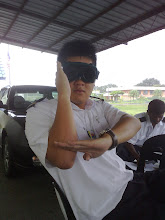The remains of the Air France jet which went missing over the Atlantic on Monday are in very deep water, making the job of finding them extremely difficult, not to mention any attempt to salvage the aircraft and the bodies of those who were on board.
A French government minister has said the black box flight recorders are believed to be at a depth of between 3,660m (12,000 ft) and 3,700m. At this depth, pressure is immense and there is no daylight.
Any search to locate the flight recorders and any plane wreckage will involve a number of technologies. Below we outline the main methods of salvaging wrecks, from divers to the latest deep sea exploratory vehicles.
Scuba diver: US Navy divers were used to retrieve bodies and light debris from TWA flight 800 which crashed into the Atlantic off New York in 1996. The plane was discovered at a depth of 40m, within the maximum operating depth for divers which is typically 50m.
Bathymetric survey: This is a sonar device placed beneath a ship that would sail in a designated pattern over an area to map the seabed. It "looks" straight down to produce a 3-D map of the seabed but typically operate up to a depth of 1,000m.
Pinger Locator System: This is a specialised listening device that is towed at a depth of up to 4,000m by a ship. The device listens out for the sound of the pinger which is part of the flight recorder. It is activated on contact with sea water and every commercial aircraft carries one. It will emit a signal for up to 30 days.
Side Scan Sonar: Once the pinger is located, a more detailed survey of the area can be carried out. The SSS is a cigar-shaped tube that is towed by a ship to map the seabed in a designated pattern. "You attach it to a cable and you mow the lawn," says Tim Janaitis, Director of Business Development at Phoenix International, a specialist marine salvage company. Mr Janaitis said he believed only the US Navy had the sophisticated pinger locator system to operate at the depth the Air France airplane is believed to be.
Remote Operated Vehicle: These are highly sophisticated yet robust underwater vehicles that can operate at depths up to 6,000m. They have video and powerful lights to illuminate the gloomy deep waters that they operate in. They can also have mechanical arms attached that allow the ROV to pick up bits of debris or attach straps to enable a ship's winch to lift the item to the surface. Phoenix International says it has raised a portion of an Israeli submarine weighing 3,600kg from a depth of 3,000m. The US navy has raised an entire helicopter from a depth of 6,000m.
Mini submarine: France has dispatched a boat with a mini-submarine, the Nautile, aboard. This can operate at a depth of 6,000m, but it was not expected to reach the zone until early next week.
sources above found at http://news.bbc.co.uk/2/hi/americas/8082025.stm

0 comments:
Post a Comment